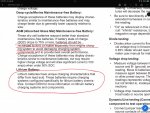I forgot yours was an A1R(too many different discussions

). Have run across a few with A1 and a 260A.
yep lots of ?
What I have gleaned from other troubleshooting sessions is that the LBCD sends 28V to that F- terminal. If you disconnect that wire you can see it on the wire coming from the LBCD. Connected to F-, the regulator provides a pulsed path to ground for it as well as the field current…
with that wire disconnected i do not think the LBCD can disconnect
a properly sized alt or battery bank teally removes the need for it, and I think the polarity protection function would have been better served by smaller diodes located at any equipment that needs it, instead of in a box mounted out in the weather…



